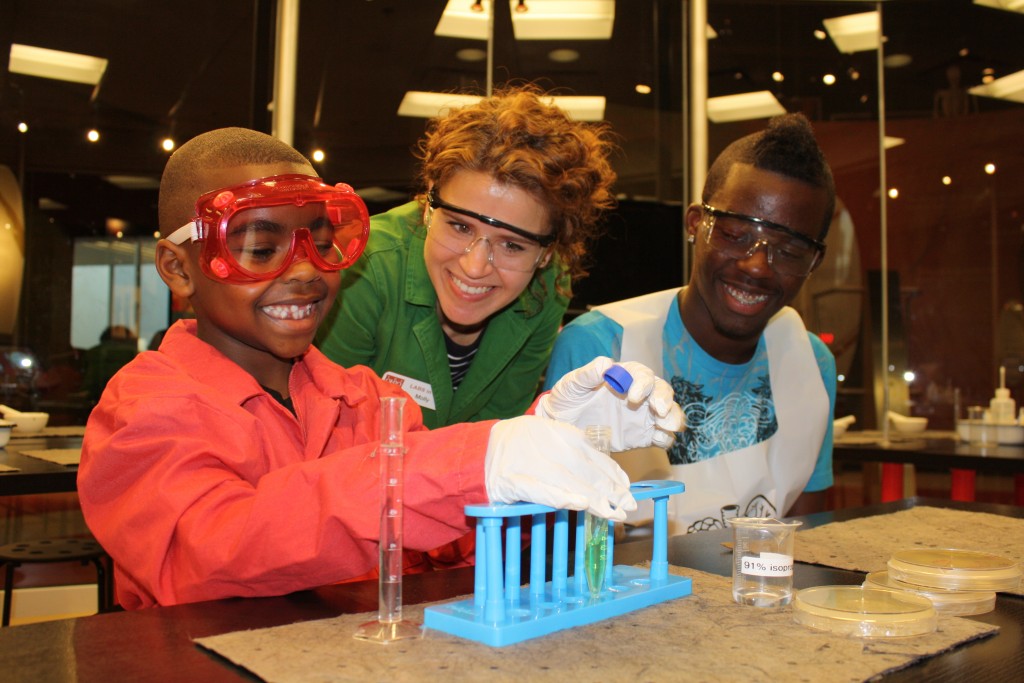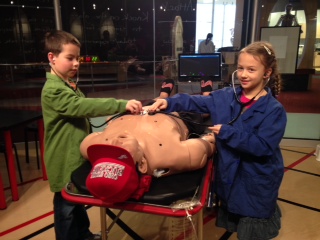The Generation Rx Initiative at Ohio State University aims to broadly spread awareness about the growing problem of prescription drug misuse. Our audiences range from young elementary-aged kids to senior citizens, and like many organizations involved in this type of work, we are constantly devising innovative ways to deliver our message. One way that we have found success? Mobilize college students to lead outreach activities. We are amazed at the energy and creativity these students bring to spearhead so much of our work. Another innovative approach? Develop creative partnerships. Don’t be afraid to open up conversation with an unexpected group or institution; you may be surprised to find a common mission!
Here, we discuss how we’ve applied these strategies in the Generation Rx Laboratory at the Center of Science and Industry (COSI), a unique drug education and research space housed within a premier science museum. In this space, which is supported by the Cardinal Health Foundation, college students work with faculty to develop and deliver educational experiments that museum visitors can conduct during their visit. In the process, these guests of all ages learn the science behind drug action as well as a lesson in medication safety. Here is Nira Kadakia, a second-year PharmD student and a longtime Generation Rx participant, speaking about her experience in the lab:
Through working at the Generation Rx Lab, I have had a unique opportunity to practice and build my science communication skills, while spreading the Generation Rx message. By utilizing college students to conduct and lead activities, COSI guests are afforded the chance to learn about science and medication safety in fun ways; in fact, sometimes it doesn’t seem like learning at all! For example, as part of one of our original activities, we had guests taste PTC paper, which contains a chemical some people can taste while others cannot. We used this to segue into an activity involving DNA extraction with a sports drink and soap. This may have seemed like simply a fun science experiment, but we used the activity to set up a discussion of personalized medicine and the fact that medicines do not work the same way in everybody. Our underlying message, therefore, was focused on medication safety.
Recently, the lab welcomed a new addition to its family: a METIman medical robot, which affords lab guests the opportunity to simulate emergency medical treatments. So far, the dummy (Bob the Abra Cadaver) has experienced hypoglycemia, an allergic reaction, and a heart attack. Guests have been able to follow step-by-step protocols to help resolve Bob’s health crises.
One thing that has been the most beneficial to my colleagues and me has been being able to practice communication skills. As future health professionals, it is imperative that we are able to take high-level, abstract ideas and concepts and explain them in a way the general public can understand. The Generation Rx Lab is a great place in which to do this. Students interact with children of all ages and their families – not all of whom have backgrounds in science. Furthermore, each activity done in the Generation Rx Lab is designed to raise awareness about medication safety and preventing the misuse of medications. It is just one more innovative way to spread the Generation Rx message even further.
The Generation Rx Lab is supported by the Cardinal Health Foundation. Learn more about the Generation Rx Lab at go.osu.edu/genrxlab.
 Nicole C. Kwiek, PhD, is a clinical assistant professor and Director of Undergraduate Studies at The Ohio State University College of Pharmacy. She is director of the Generation Rx Lab at COSI.
Nicole C. Kwiek, PhD, is a clinical assistant professor and Director of Undergraduate Studies at The Ohio State University College of Pharmacy. She is director of the Generation Rx Lab at COSI.
Nira Kadakia is a second-year Doctor of Pharmacy student at The Ohio State University College of Pharmacy.

